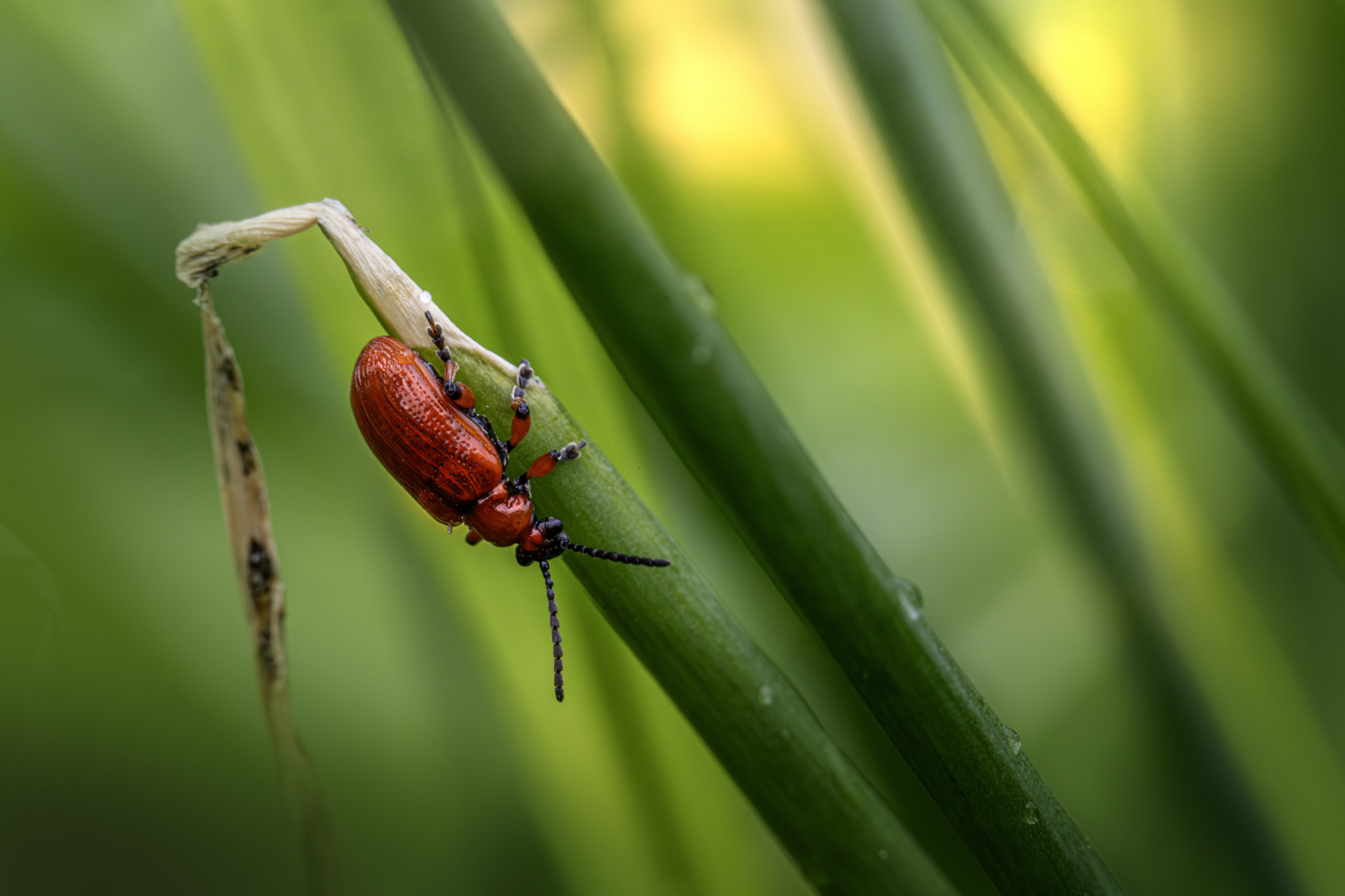The Lily Leaf Beetle (Lilioceris lilii), also known as the Scarlet Lily Beetle or Red Lily Beetle, is an invasive pest that primarily targets lilies and fritillaries. Here are some detailed features and characteristics of the Lily Leaf Beetle:
Appearance
- Size: Adult beetles are about 6-9 millimeters in length.
- Coloration: They are bright red with a shiny, almost metallic appearance. The head, legs, and underside of the beetle are black.
- Body Structure: The body is elongated and has a distinctive domed shape. The elytra (wing covers) are smooth and rounded.
Habitat
- Preferred Habitats: Lily leaf beetles are found in gardens, parks, and natural habitats where lilies and fritillaries grow. They prefer areas with an abundance of their host plants.
- Geographic Range: Native to Europe and Asia, they have spread to North America, particularly in Canada and the northeastern United States.
Behavior
- Feeding: Both adults and larvae feed on the leaves, stems, flowers, and buds of lilies and fritillaries. Their feeding can cause significant damage, often leading to defoliation and reduced plant vigor.
- Overwintering: Adults overwinter in the soil or leaf litter and become active again in the spring. They are often found on the undersides of leaves, where they can be less visible to predators.
Reproduction
- Mating: Mating occurs in the spring, shortly after the adults emerge from overwintering.
- Eggs: Females lay clusters of reddish-orange eggs on the undersides of leaves. Each female can lay up to 450 eggs in her lifetime.
- Larvae: The larvae are orange, slug-like, and often covered in their own excrement, which provides camouflage and protection from predators. They feed voraciously on the host plants.
- Pupation: After several weeks of feeding, the larvae drop to the soil to pupate. The pupation period lasts about two weeks, after which adult beetles emerge.
Impact on Plants
- Damage: The feeding activity of both adults and larvae can cause significant damage to lilies and fritillaries. Severe infestations can lead to complete defoliation, stunted growth, and failure to flower.
- Signs of Infestation: Signs include holes in leaves, chewed flower buds, and the presence of larvae covered in their excrement.
Control Methods
- Hand Picking: Regularly inspecting plants and hand-picking adult beetles, larvae, and egg clusters can help reduce the population.
- Biological Control: Natural predators, such as certain species of parasitic wasps, can help control lily leaf beetle populations. Research is ongoing to find effective biological control agents.
- Chemical Control: Insecticides can be used, but they should be applied with caution to avoid harming beneficial insects. It’s essential to follow the instructions on the pesticide label carefully.
Interesting Facts
- Invasive Species: The lily leaf beetle is a highly invasive species, and its introduction to new areas can lead to significant ecological and economic impacts.
- Rapid Spread: They have a high reproductive rate and can spread quickly once established in a new area.
- Host Specificity: While they primarily feed on lilies and fritillaries, they can sometimes be found on other related plants, though they do not usually cause significant damage to these secondary hosts.
Identifying Lilioceris lilii
- Distinctive Features: The bright red coloration of the adults is the most distinctive feature. The black head, legs, and underside, along with the smooth, rounded elytra, help in identification.
- Behavioral Traits: Observing their feeding behavior and the presence of larvae covered in excrement can aid in identifying an infestation.
In summary, the Lily Leaf Beetle (Lilioceris lilii) is an invasive pest known for its bright red coloration and significant impact on lilies and fritillaries. Effective management includes regular monitoring, hand-picking, and, when necessary, the use of biological or chemical controls. Awareness and prompt action are essential to mitigate the damage caused by this pest.
Visited 828 times, 15 visit(s) today
Views: 1228
Subscribe to the newsletter:
